Our voyage to the archipelago Islas Juan Fernandez (the main island was renamed Islas Robinson Crusoe in 1972) is the first real concrete connection with William Dampier and his published journals of buccaneers antics, natural history and mapping remote parts of the world. If I am honest this part of our route round the world was the place I was most looking forward to visiting - since I was a child and reading Defoe´s version of the Selkirk story and hence discovering the Dampier legacy in history. It was a long time coming and turned out to be a pain in the neck to organise – and nearly didn´t happen at the last minute. We intend to warn Marcelo and Monika on the island´s top class Refugio that the company operating flights to the island seldom pick up the phone and even less often answer emails or direct questions about times and dates of flights! So unless you have a punter willing to persevere for another 46 years they may lose some trade...
But we were not disappointed and all that time waiting and hassling was rewarded with the highlight of our trip to South America – Las Islas Robinson Crusoe a brooding crag with jagged peaks so sharp you could sharpen your cutlass, uninhabited in Dampiers day and with 500 friendly fishery folk three hundred years later in 2007 in the only village/town San Juan Bautista. Sleek black fur seals were the first islanders to greet us as they were to William and crew of the Trinity on Christmas Eve 1680 when he recorded they ´swarm as thick about this island as if they had no other place to live….big as calves, the head of them like a dog, therefore called by the Dutch the Sea-hounds´ They were ‘forced to kill them to make a path to the shore” There were colonies of thousands of seal like creatures with their shaggy collars lolloping ashore with their ´´great goggle eyes´´ and sharp teeth from which men made dice. Dampiers account is credited as the first to give them the English name of sea lion.
Since this time Dampier and his pirating friends killed hundreds of the Juan Fenranadez sea lions for meat and used their blubber for oil and preservative and once the islands became more established on the Pacific nautical route seal hunters and skinners came from England, France and the United States to exploit the colonies. Between 1788 and 1809 American hunters alone arrived in 74 different ships and exterminated 5 million seals with the result of the Juan Fernandez seal becoming an endangered species.
In 1935 the islands were made a national park and a World Reserve to protect them from any further dangers to their fragile eco systems – and are renowned for having the highest rate of endemic species and one of the greatest diversity eco systems in the world. In Dampiers time Robinson Crusoe Island was populated by endemic fragrant sandalwood and pimento trees now sadly extinct, chopped down for ship repairs, building and firewood.
Happily the beautiful endemic Juan Fernandez hummingbird , tawny red male and azure blue-black female are still very much evident - we patiently watched them, listening to their noisy hummingbird meeting around the ‘cabbage tree’ on the path to Pangal on our first day of discovery on the island. Once we had established who these little busybodies were , we seemed to stumble across them at every turn – a real treat!
Much of the island is uninhabited and uninhabitable by man, starkly vertical mountains or barren martian-red landscape of volcanic bombs and eroded soil. There is an underwater volcano at the end of the island near Santa Clara which last erupted in 1835 covering some of the facing ridges and peaks in the harsh red ash which interrupts the glowering black of rock and the deep green of the few fertile valleys which manage to sustain trees and plants. And then there is the wild and turbulent sea surrounding the islands coloured the deepest petrol blue with radiant turquoise in the few and far between shallows.
Lobster, rock salmon and cod fishing is the main economy for the islanders, and we were joined by hundreds of flailing lobsters squeezed into tens of cardboard boxes onto the little aircraft in the hold and the cabin, taking priority over passengers in seats and displacing the flights life-raft which was stowed away under the passengers belongings and the post for the mainland. These lobsters would find their (pan of hot water) destination as far away as Germany and were treated with obvious pride by the fisherman whose livelihoods they governed. It was fascinating to walk along the pier to watch the fisherman bring in their catches sometimes literally throwing the fish over the edge of their boat from the lines as so many could be caught at a time – and huge lobsters scuttling along the concrete making a bid for freedom. While we were there the fisherman who had carved the Guilliermo Dampier plaque we found on our bedroom wall, caught a 22kg squid and had cut it up in pieces sharing it out between many families, carting it home through the village in various wheelbarrows.
Mark caught a splendid Amberjack which he then gutted and cooked over a campfire on our night sleep over in Puerto Frances… our attempt at being marooned for 48 hrs … but also with Carlo our wonderful guide who knew all things botanical, vegetable and mineral about the islands and many more dodgier tales as well! The best of these – and some may say a bit of a tourist attraction – is the tale of Lord Anson of the Admiralty no less and his partner in dastardly deeds, Cornelius Webb who in 1741 or so had somehow found the vast treasure of gold, jewels and precious stones pirates had stolen from the Governor of Mexico in Dampiers time, buried it again in Puerto Ingles then blown up the ship and crew so no living person would know where he, Cornelius Webb had buried it – apart form Lord Anson who had earlier agreed with Webb where the secret hiding place should be. Webb required a new ship and crew to be sent from England so he could dig it up again and share the spoils with Anson, and dispatched several letters to Anson back in Blighty to send him such a ship. However the postal service in that day was sadly lacking and letters could sometimes take two or three years to reach their destination. By the time Webb’s letter got to England Anson was dead, and then Webb died waiting for his reply – the result is the treasure is still buried somewhere in Puerto Ingles! And guess what – an American spends every island summer digging up Pto Ingles rock by rock looking for the treasure – by hand – as no mechanical equipment is allowed on a World Reserve site….there’s always one isn’t there?!
I have hundreds more stories and adventures to tell from our trip to Islas Robinson Crusoe but these may wait for a future tome – but not to spoil the fun or detract from the fabulous hospitality and kindness of Marcelo and Monica at Refugio Nautico, the creative cooking and care of Maralena and Myriam and the smiling Pado who all made our stay truly remarkable – we didn’t want to leave them and sincerely intend to return to this truly mystical archipelago of enthralling landscapes, famous maroons and curious bucaneers who had a penchant for writing down their thoughts and recording natural history.
Subscribe to:
Post Comments (Atom)







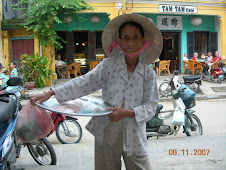


















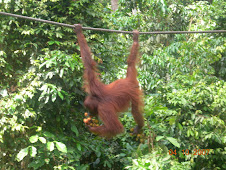


























































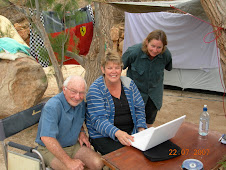



















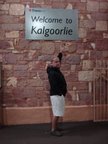
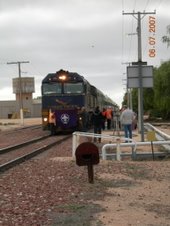
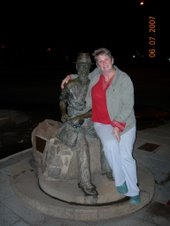






































































































































































































































































































































1 comment:
Hey guys!! i can tell youre having a wonderfull time!
I drop you both a line because im in Wales at the moment, and I must say that you got a beatifull country
Cheers to both of you
abrazos
Rodrigo guide Hosteria Las Torres,
Post a Comment